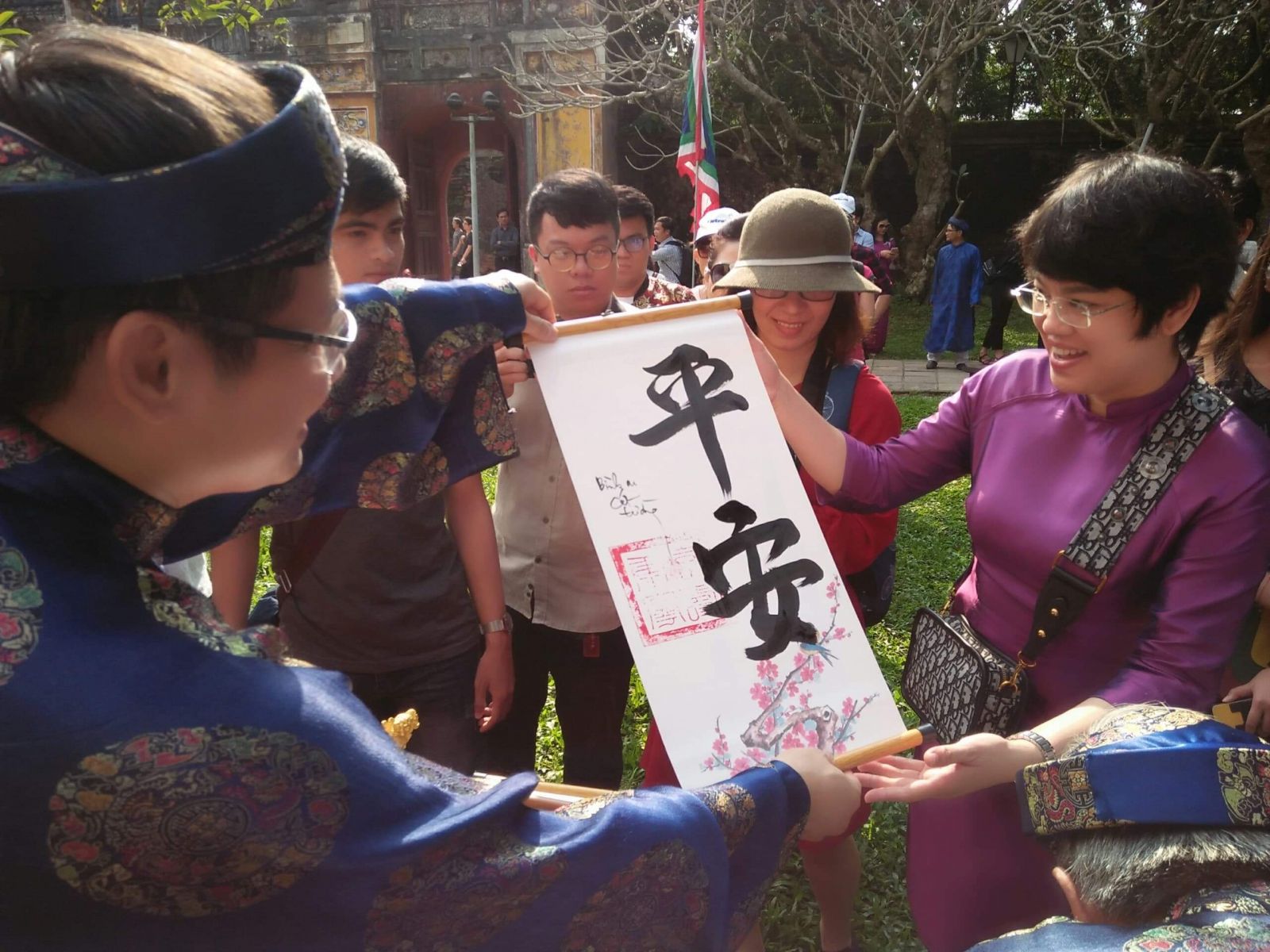
Wednesday, 13/02/2019 07:55
(GMT+7)
Hue Imperial Citadel’s holds seal-opening ceremony and gifts visitors spring calligraphy
TTH.VN - Activities include lowering nêu pole, holding the New Year seal-opening, and gifting spring calligraphy to visitors to the Citadel on the morning of February 11 or the 7th day of the Lunar New Year.

Spring calligraphy
In this Lunar New Year holidays, Hue Citadel Complex has welcomed and safely served over 130,000 visitors. In addition to the regional security and safety plans for tourists, many art and cultural activities have been organized by Hue Monuments Conservation Center from December 23 to January 7 of the Lunar New Year. In particular, the key was the first 3 days of the New Year, when entrance to Hue heritage sites was free of charge for Vietnamese tourists.
According to old tradition, the first ritual held by the Nguyen Dynasty before Tet holidays is Ban Sóc ceremony, also known as the bestowing the New Year's calendar ceremony, on the 1st of the December of the lunar calendar. After the Ban Sóc ceremony was the Tiến Xuân ceremony. This was an important ceremony held in the spring period. In late December (usually on December 20 of the lunar calendar), the court held the Phất Thức ceremony, which was a cleaning ceremony. On this day, the highest and second-highest ranking mandarins along with the staff of the Cabinet and the Secret Service wore the normal court dress and attended court at Can Chanh Palace.

Gifting spring blessings with calligraphy
Here, there are 6 sophisticated wooden cabinets containing gold and jade seals of the dynasty. When the King appeared, these cabinets would be open. The mandarins would take water from the Huong River and put it in a vase full of fragrant flowers then wiped the seal with a red towel. Afterwards, the seal would be put back in the cabinet and locked. The cabinet would then be sealed with the words “Hoàng Phong” (Imperial seal). After the ceremony, the king and his mandarins would begin their holiday break and would not use the seal anymore. At the beginning of the New Year, after the "seal-opening" ceremony, works would go back to normal.
With the meaning of "seal-opening" in the Imperial Palace, the Board of Directors of Hue Monuments Conservation Center solemnly recreated the old ritual in the (male) ao dai and turban. They used a recreated seal to press on calligraphy writings which had spring blessings written with good meanings such as: Prosperity – Longevity – Well-being – Safe, and gifted them to visitors.
Story and photos: Dong Van